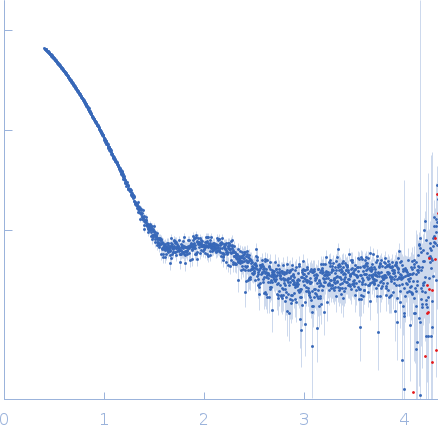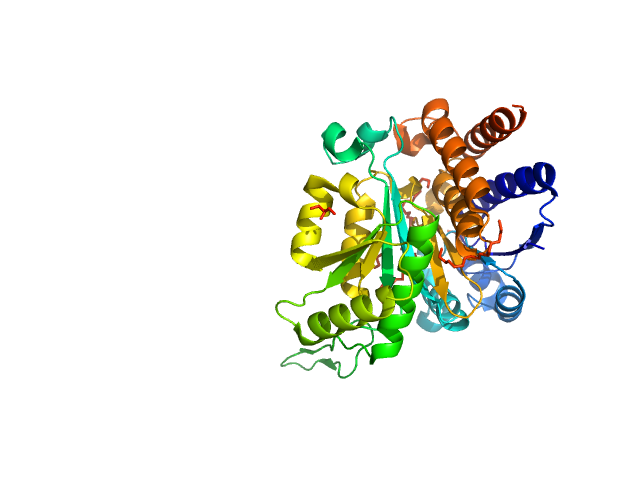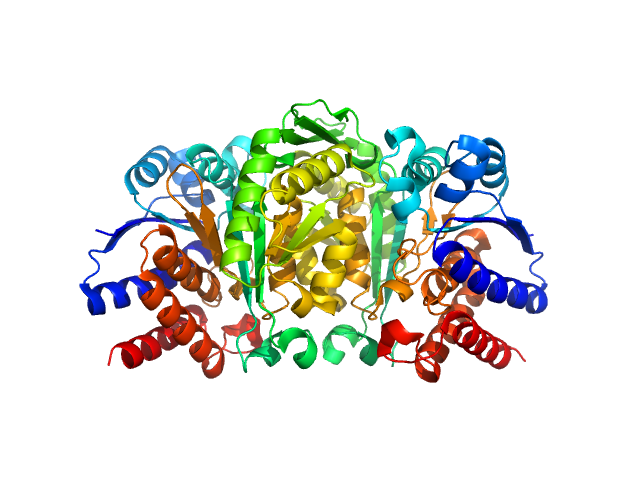|
Synchrotron SAXS
data from solutions of
Mutation of the Active Site Residues of Thermus thermophilus 3‑Isopropylmalate Dehydrogenase
in
25 mM MOPS/NaOH, pH 7.6
were collected
on the
EMBL P12 beam line
at the PETRA III storage ring
(DESY; Hamburg, Germany)
using a Pilatus 2M detector
at a sample-detector distance of 3.1 m and
at a wavelength of λ = 0.124 nm
(I(s) vs s, where s = 4πsinθ/λ, and 2θ is the scattering angle).
One solute concentration of 4.52 mg/ml was measured
at 10°C.
20 successive
0.050 second frames were collected.
The data were normalized to the intensity of the transmitted beam and radially averaged; the scattering of the solvent-blank was subtracted.
The OLIGOMER analysis is made available in the full entry zip archive comparing for the D217A, D245A, K185A, N102A, and Y139A mutant state(s) in solution.
|
|
 s, nm-1
s, nm-1

